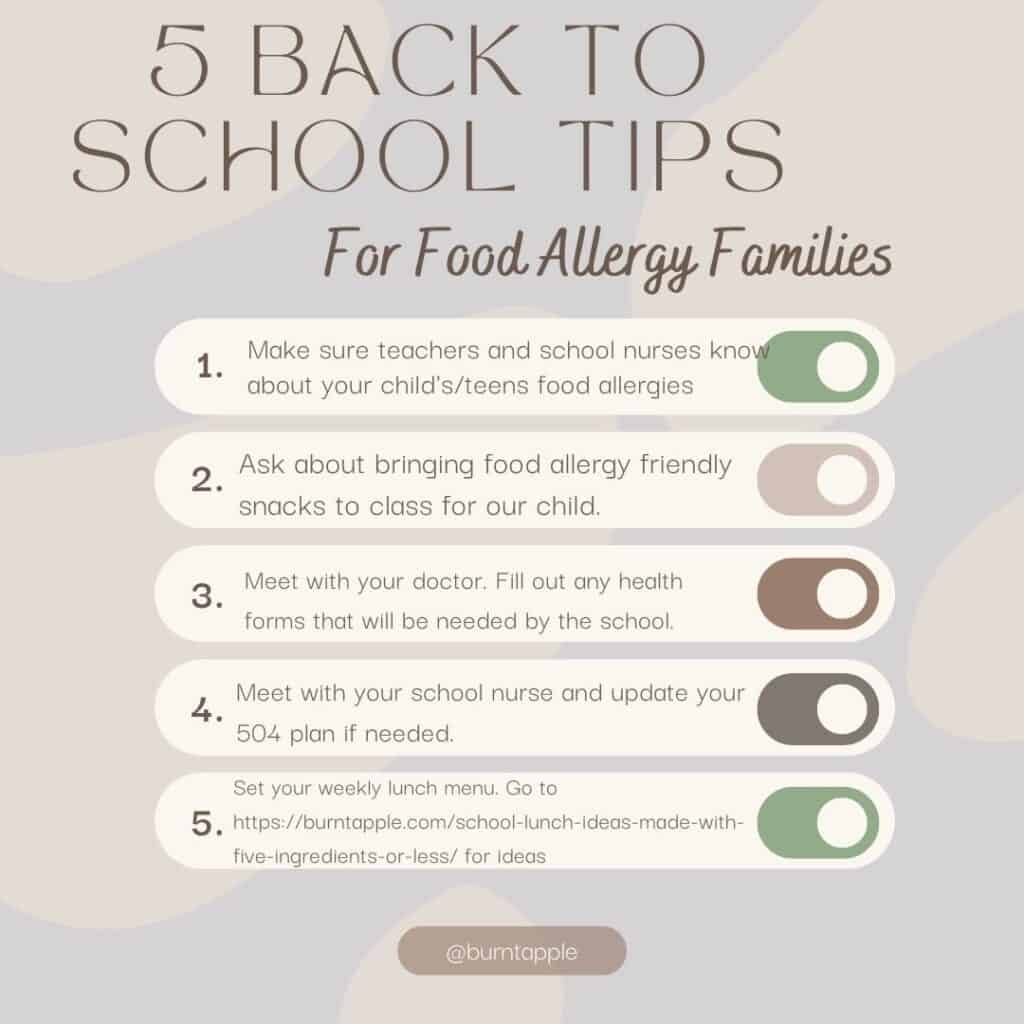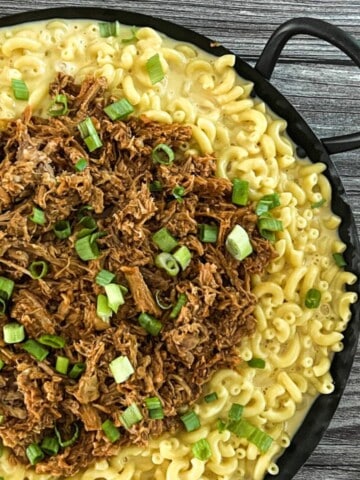Are you headed back to school? Don't forget these five back to school tips for food allergies!

Food Allergies vs Food Intolerance
There is so much confusion around the terms food allergies and food intolerances. Both are no fun but here are the major differences:
Food Intolerances:
- Often noticed a few hours after consuming the food
- Most often irritates the digestive system, not the immune system
- The irritation to the food may come on gradually or over time.
- May only have a reaction when you eat a lot of the food or eat it often.
- Not life threatening
- May experience symptoms like migraines, bloating, diarrhea, tiredness, nausea/vomiting or not feeling well.
Food Allergies:
- Often noticed a few minutes after consuming the food (but not always the case in celiac)
- The immune system is always involved and the digestive system may be as well
- Antihistamine or epinephrine may need to be used.
- Can be life threatening
- In addition to possibly experiencing some of the symptoms for food intolerances a person may experience rashes, difficulty breathing, swelling, runny nose, or anaphylatic shock.
- Happens every time you eat that particular food
As always consult your doctor if you feel you may have an allergy or i This article is for informational purposes only. Thanks!
Heading Back to School
There is always a lot of angst around heading back to school. Some of the questions I get personally get asked a lot along with other questions you may have are:
- Will my child be isolated in the lunchroom or classroom?
- Do I need to fill out health forms?
- Who do I go to to find all this out?
- What are some easy meals I can send my student with?
- Can I send my student with snacks?
#1: Make sure teachers, school nurses and appropriate staff know about your students allergy
It's always important to make sure that the people who might need to know at a school are aware of any allergies your student may have.
#2: Ask about bringing food allergy friendly snacks to class for your student.
If you have a student who might need snacks, ask the teacher or front office if you can have some available. I have some students who have kept treats in the front office or in their classroom that they can come grab if students have a birthday party and bring treats.
#3: Meet with your doctor. Fill out any health forms that will be needed by the school.
If your student requires health forms for the school, make sure to set doctors appointments early so you can get into the doctor and get health forms completed.
#4: Meet with your school nurse and update 504 plan if needed.
A 504 plan gives a student supports they need at school. 504 plans can be written for health needs like asthma, diabetes, and food allergies. They can also be written for mental health needs and supports a student may have including those for anxiety or depression. you can call the front office of the school and ask to meet with a school nurse to make a 504 plan.
Some examples of health supports for food allergies are:
- List of the foods your student is allergic to
- Signs and symptoms of an allergic reaction
- An anaphylaxis plan on what to do if your student does have an allergic reaction at school.
- Non food awards that can be given to your child.
- Placement of snacks or treats in the classroom that you have made available for your student
- How field trips, class parties and the lunchroom should be handled.
#5: Set your weekly lunch menu
For our family, making sure that lunches are set and ready to go each week is very important in saving money and feeling prepared for the week. It also helps with the ease and flow of the week.
I have a free printable with lot's of different combinations of easy lunch ideas you can make. It's also to easily cross of foods that your student may not like and mix and match with the remaining items.
GET YOUR PRINTABLE LUNCH MENU HERE.
Have a great school year this year!!!







Leave a Reply